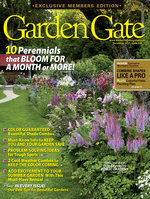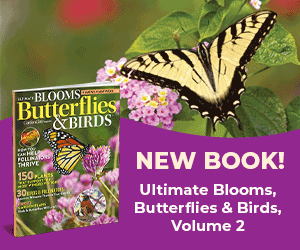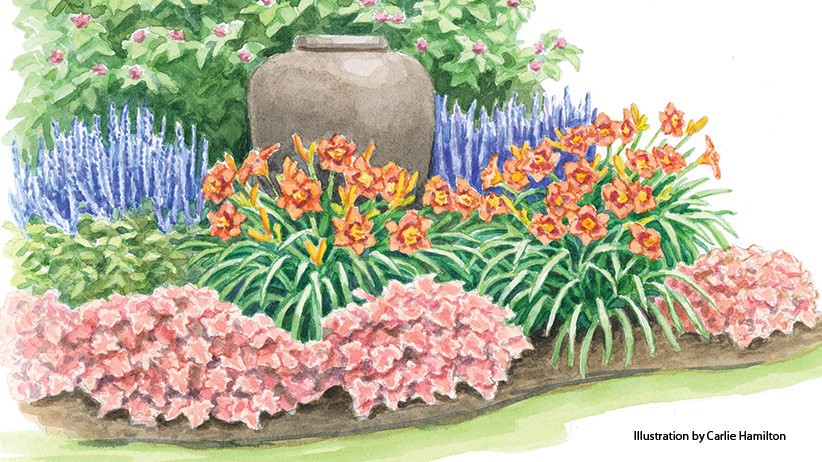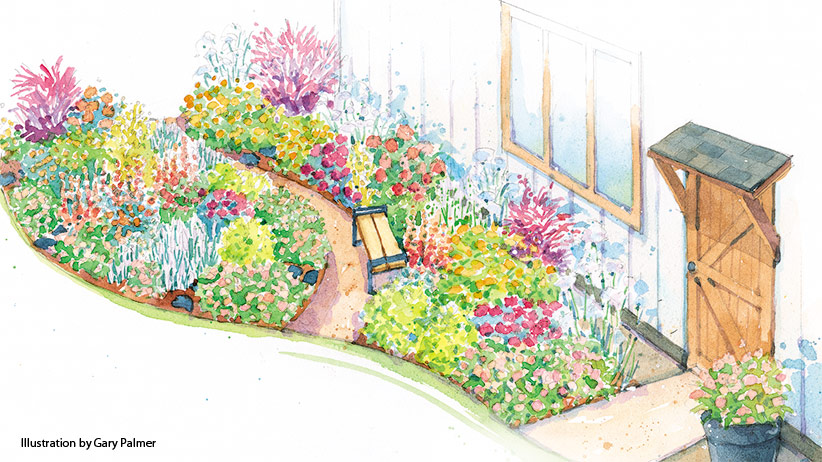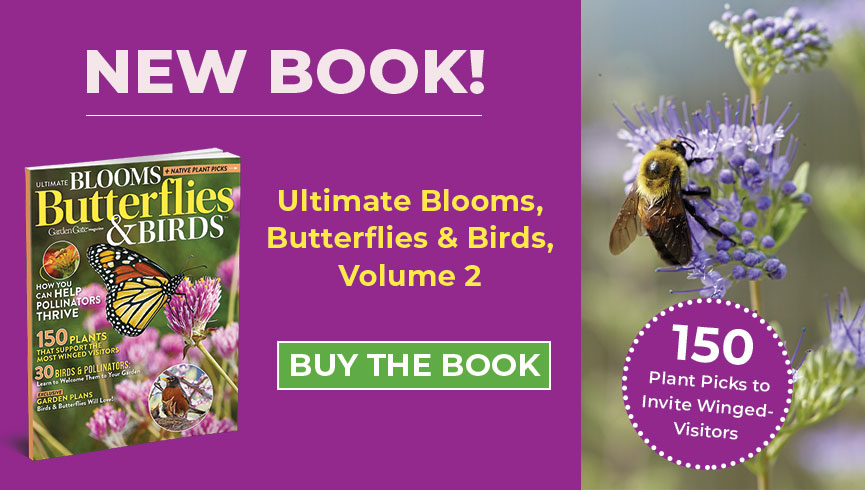
Create a backyard border for birds
Ever wonder why all the birds are partying at the neighbor’s instead of your place? By offering plenty of food and shelter all season long, you not only attract birds but also encourage them to think, "This could be a perfect spot to nest!"
Siting a bird garden
This garden design incorporates a mix of native North American plant species, their cultivars and other plants that birds love. If your property is near a natural area, such as a woodland with large, mature trees, this garden would serve as an excellent transition between the woodland and lawn. But wherever you grow this garden, birds will enjoy the seeds, berries, insects and shelter that these plants offer. For optimal bird-watching, site the bed where you can easily view it from your window, especially in fall, when the garden bursts into autumn color. Avoid planting this garden next to your patio or driveway so birds don’t make a mess there.
You Might Also Like:
Best Plants With Berries for Birds
More Wildlife & Pollinator Garden Plans
Avoid These Bird Feeding Mistakes

Create an ideal environment for birds in your landscape
Like shelter plants, birdhouses offer cozy nooks for nesting and provide safe spots away from predators and inclement weather. Supplemental bird feeders provide constant, reliable food, which is especially vital when other natural food sources are scarce. This mix of plants features flowers blooming at different times, stunning fall colors and even some winter charm. So, while it’s crafted with the birds in mind, it’s also a treat for you to enjoy every season!
Attract specific birds to your garden
Different bird species have specific needs for their homes, and not all birdhouses suit every bird. The bird box in this plan is designed for the northern flicker, a species that is experiencing population decline but is commonly found across North America in towns, woodlands and grasslands. Mount the birdhouse on a post 6 to 12 feet high, at the back of a border with a clear flight path. Fill the birdhouse with white pine wood chips, and clean and refresh with new chips each year either in fall after breeding season ends or early spring before it begins.
Add a nesting basket
Offer a pre-built nesting site in a tree by making a basket with one 12x12-inch piece of hardware cloth and placing it 6 to 10 feet high on a forked branch with branches hanging overhead. Use wire to secure the nesting basket to the tree. This is great for birds that like to nest out in the open, such as finches, mourning doves and robins. Some species will even return year after year to the same location to breed and raise their young. Don’t put more than one nesting basket in a tree.
Feed birds throughout the year
The elderberry, crabapple and beautybush in this design offer fruit in fall and winter, serving as crucial food sources for migrating birds. All the perennials in this plan provide seeds when the flowers fade. And nectar-rich Joe-Pye weed, threadleaf coreopsis, blazing star and yarrow attract hummingbirds during the growing season.
You Might Also Like:
Unique Birdhouse Woodworking Plans
Attract More Birds With Nesting Boxes
6 Plants Birds Love

Seasonal bird garden checklist
Plant this garden in full sun to part shade in moist, well-drained soil. Leave the perennials and grasses standing through winter for visual interest and to feed the birds.
Winter garden to-do
In late winter, while plants are still dormant, prune the crabapple by removing dead, diseased or crossing branches. Similarly, prune elderberry by taking off any unwanted root suckers and any dead or diseased branches to encourage better flower and fruit production. Even though the roots are hardy, the beautyberry’s stems often suffer winter dieback in zones 5 and 6. Once new buds emerge, cut back the dead stems.
Early spring chores
In early spring, cut back the perennials and grasses to prepare plants for new growth and divide those that have become overcrowded. Deadhead coreopsis in midsummer using hedge shears or scissors to cut off all the spent flowers at once for a second flush in fall. Yarrow is known to spread somewhat aggressively through self-seeding and rhizomes. To control it, divide plants in early spring when new growth emerges or in late fall after flowers fade. Toss extras in the compost. Or cut back spent blooms before they seed, but birds, such as goldfinches, juncos and towhees, will likely eat them off the plant and ground before they can germinate in spring.
Late fall cleanup
Once a year, in late fall or early winter, remove old nests, which can harbor parasites and pathogens, from birdhouses. For both birdhouses and feeders, use a solution of 9 parts water to 1 part bleach, scrub thoroughly, rinse well and let birdhouses and feeders dry completely before refilling feeders with fresh seed or putting birdhouses back in place.
Keep birdfeeders clean to prevent disease
Clean birdfeeders at least once every two weeks. During times of heavy use or rain, clean them more frequently to prevent mold and bacteria growth, which can cause diseases among bird populations.
You Might Also Like:
Fall Garden Checklist
Must-Have Battery-Powered Garden Tools
Watch Our Gardening Videos on YouTube
Bird-friendly garden planting plan

Meet the plants in this backyard bird border
Check out the lettered plan above and see the corresponding plant information in the slideshow below to find out more about the beautiful plants that make up this bird-friendly garden. Like this garden design? See our full collection of wildlife plans.

